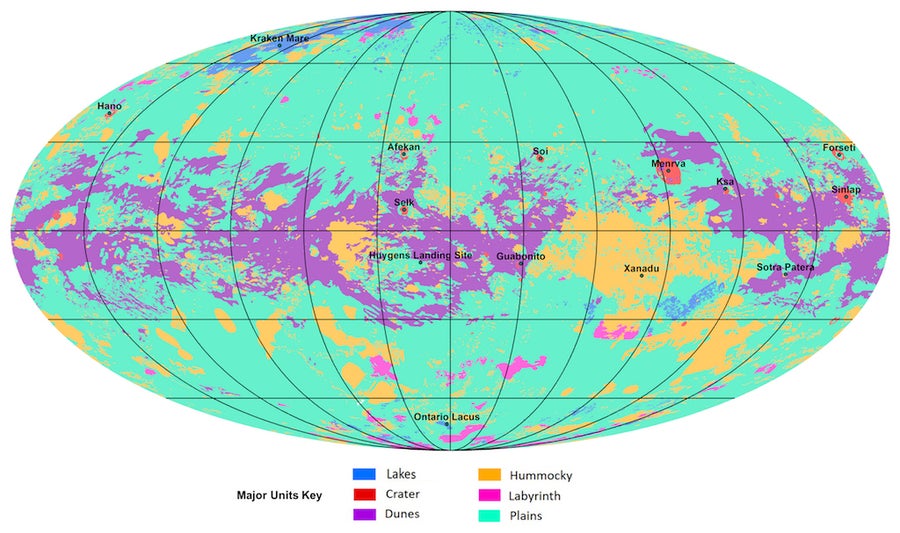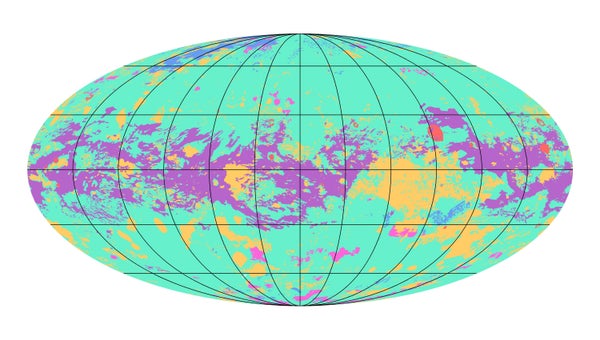This article was published in Scientific American’s former blog network and reflects the views of the author, not necessarily those of Scientific American
Humans have been mapping other worlds since we peered at the Moon with our eyes and gazed at Mars through our earliest telescopes. But it can be a painstaking process. That's especially true for places that are very distant and very shrouded by their atmospheres.
Saturn's moon Titan was discovered by Christiaan Huygens in 1655, although it only gained its current moniker in 1847, thanks to the suggestion of John Herschel for using the names of pre-Olympian gods of Greek myth, whose were, collectively, the Titans.
But with a thick, optically opaque atmosphere Titan resisted much closer scrutiny until the Cassini mission arrived around Saturn in 2004.
On supporting science journalism
If you're enjoying this article, consider supporting our award-winning journalism by subscribing. By purchasing a subscription you are helping to ensure the future of impactful stories about the discoveries and ideas shaping our world today.
Now, by combining Cassini's cloud penetrating radar mapping with its infrared imaging of Titan, planetary scientists have constructed our best map of the surface morphology of this frigid moon---and the corresponding geological character across its surface. That stunning map is shown at the top of this post and here below, with a key to the major types of surface terrain.

Credit: NASA, JPL-Caltech and ASU
Although not all of Titan's surface was probed by Cassini's radar, the researchers were able to extrapolate from areas with both radar and infrared coverage to categorize the types of geologic 'units' found everywhere on the surface. These units include broad, flat regions (plains), so-called labyrinth regions of tectonic disruption and fluvial channels, as well as hummocky areas of hills and a few mountains, dunes, and lakes.
Titan is geologically active, with liquid hydrocarbons like methane and ethane taking on the role that water does in Earth's environment - evaporating, condensing, raining, and flowing in rivers and into lakes. It appears that some of its geology, like the dunes and lakes are relatively young, whereas the hummocks and mountains are the oldest kinds of terrain.
The dunes tend to occur towards Titan's equator and cover about 17% of its surface. The plains occur at mid latitudes and make up roughly 70% of the surface, and the complex labyrinth terrains and lakes are towards the poles. The lakes, one of the most intriguing aspects of Titan only cover around 1.5% of its surface.
With this map in hand geologists and planetary scientists are continuing to puzzle over both the longer geological and geophysical history of this stunning moon, and what happens as its seasons come and go across the 29 year orbit of its parent world Saturn.
